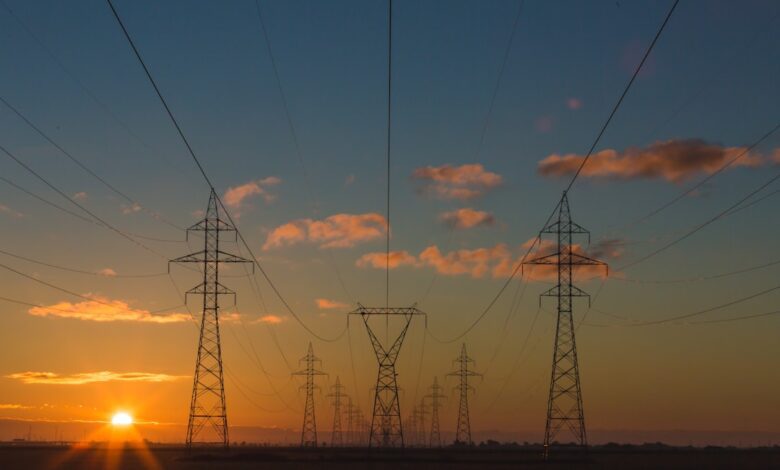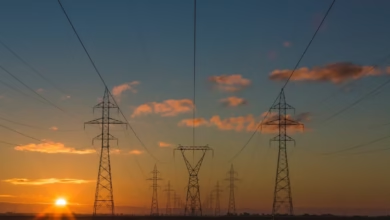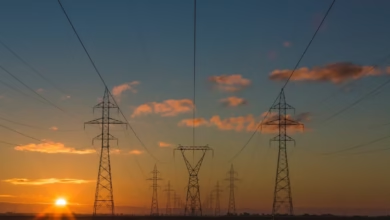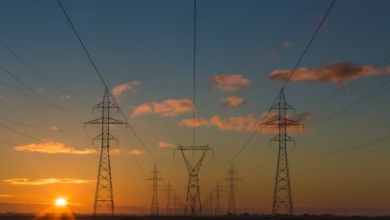Transitioning to Tomorrow: Harnessing Renewable Energy and Innovations for a Sustainable Future

In recent years, the global energy landscape has undergone a dramatic transformation, driven by an urgent need to combat climate change and reduce reliance on fossil fuels. The rise of renewable energy sources—particularly solar, wind, and hydrogen power—has emerged as a beacon of hope in this transition. Governments worldwide are stepping up their efforts to incentivize clean energy adoption, recognizing its potential to create jobs, stimulate economic growth, and foster environmental sustainability. However, as we embrace these innovative energy solutions, significant challenges remain, particularly in the realm of energy storage, which is crucial for managing the intermittent nature of renewable resources.
Moreover, the future of nuclear energy continues to spark debate as it plays a vital role in achieving low-carbon goals. Traditional oil and gas companies are also adapting to this evolving landscape, seeking new strategies to align with the clean energy movement. Electric vehicles are becoming increasingly integral to reducing fossil fuel dependency, while fluctuations in energy prices pose economic challenges that cannot be ignored. This article delves into these pressing topics, exploring the growth of renewable energy, the technological innovations aimed at overcoming storage challenges, and the multifaceted role of diverse energy sources in shaping a sustainable future. Join us as we navigate the complexities of the energy transition and examine the potential for a more resilient and efficient energy system.
- 1. **Power Shift: The Growth of Renewable Energy Sources and Government Incentives**
- 2. **Navigating the Energy Landscape: Challenges and Innovations in Storage Solutions**
- 3. **Charting a Sustainable Future: The Role of Nuclear Energy and Electric Vehicles in the Energy Transition**
1. **Power Shift: The Growth of Renewable Energy Sources and Government Incentives**
The global shift toward renewable energy sources has gained unprecedented momentum over the past decade, driven by a combination of environmental concerns, technological advancements, and changing economic landscapes. Governments around the world are recognizing the urgent need to transition from fossil fuels to cleaner alternatives in order to combat climate change, reduce greenhouse gas emissions, and enhance energy security. As a result, they are implementing a variety of incentives aimed at promoting the growth of renewable energy, particularly solar, wind, and hydrogen power.
These incentives take many forms, including tax credits, subsidies, grants, and feed-in tariffs, designed to lower the initial investment costs associated with renewable energy projects. For instance, the Investment Tax Credit (ITC) in the United States has significantly boosted solar energy adoption by allowing homeowners and businesses to deduct a substantial percentage of the cost of solar systems from their federal taxes. Similarly, many countries offer feed-in tariffs that guarantee fixed payments for electricity generated from renewable sources, providing a stable revenue stream for producers.
Furthermore, governments are increasingly investing in research and development to drive innovation in renewable technologies. Public funding for projects aimed at improving the efficiency and cost-effectiveness of solar panels, wind turbines, and hydrogen production methods plays a critical role in making these energy sources more competitive with traditional fossil fuels. Collaborative efforts between governments and private sectors are also fostering advancements in energy storage solutions, which are essential for addressing the intermittent nature of renewable energy generation.
In addition to financial incentives, regulatory frameworks are evolving to support the integration of renewable energy into national grids. Policies that mandate renewable energy targets or establish renewable portfolio standards encourage utilities to diversify their energy mix and invest in clean energy sources. These regulatory measures not only facilitate the growth of renewables but also help to create a more sustainable energy infrastructure.
As a result of these initiatives, the share of renewable energy in the global energy mix is steadily increasing, reflecting a significant power shift in the energy landscape. Countries that once relied heavily on coal and oil are now leading the charge in renewable energy deployment, demonstrating that with the right incentives and policies, a transition to a more sustainable energy future is not only possible but also economically viable.
2. **Navigating the Energy Landscape: Challenges and Innovations in Storage Solutions**
The transition to renewable energy sources like solar and wind power presents significant opportunities but also challenges, particularly in energy storage. As these energy sources are inherently intermittent—producing power only when the sun shines or the wind blows—effective storage solutions are critical to ensuring a reliable energy supply. Current storage technologies, primarily lithium-ion batteries, are being continuously improved, yet they face limitations related to capacity, cost, and environmental impact.
Innovations are emerging to address these challenges. For instance, advancements in solid-state batteries promise higher energy densities and safety compared to conventional lithium-ion technologies. Additionally, flow batteries, which store energy in liquid electrolytes, offer the potential for longer-duration storage, making them suitable for balancing supply and demand over extended periods.
Beyond conventional batteries, researchers are exploring alternative storage methods, such as pumped hydro storage, compressed air energy storage, and advanced thermal energy storage. These technologies can store energy at a larger scale and for longer durations, helping to mitigate the fluctuations associated with renewable energy generation.
Moreover, developments in grid-scale storage solutions are crucial for integrating renewables into existing power systems. Innovations in artificial intelligence and machine learning are enhancing energy management systems, optimizing the dispatch of stored energy based on real-time demand forecasts and system conditions.
As governments and private sectors invest in these innovations, the future of energy storage looks promising. The challenge remains to scale these technologies effectively and reduce costs, making them accessible for widespread adoption. Successful navigation of this energy landscape will be pivotal in achieving a sustainable and reliable energy future, supporting the transition to a low-carbon economy.
3. **Charting a Sustainable Future: The Role of Nuclear Energy and Electric Vehicles in the Energy Transition**
As the world grapples with the urgent need to reduce greenhouse gas emissions, nuclear energy and electric vehicles (EVs) are emerging as vital components of a sustainable energy future. Nuclear power offers a low-carbon alternative to fossil fuels, capable of generating large amounts of electricity with minimal emissions. With advancements in technology, such as small modular reactors (SMRs) and improved safety measures, nuclear energy is becoming increasingly attractive. These innovations not only enhance the safety and efficiency of nuclear plants but also address public concerns about waste management and potential accidents.
On the other hand, electric vehicles play a crucial role in the transportation sector, which is a significant contributor to global emissions. The widespread adoption of EVs can help reduce reliance on oil and decrease air pollution in urban areas. Governments worldwide are implementing incentives such as tax credits, subsidies, and infrastructure investments to encourage the transition to electric mobility. The expansion of charging networks and advancements in battery technology are further facilitating this shift, making EVs more accessible and convenient for consumers.
Together, nuclear energy and electric vehicles can complement each other in creating a more sustainable energy landscape. Nuclear power can provide a stable and reliable source of electricity to charge EVs, especially as demand increases. By harnessing the strengths of both technologies, we can accelerate the transition to a low-carbon economy, ultimately reducing our dependency on fossil fuels and mitigating climate change. As nations strive to meet their climate goals, the integration of nuclear energy and electric vehicles will be essential in charting a sustainable future.
In conclusion, the transition to renewable energy is not just a trend but a necessary evolution in our quest for a sustainable future. As we have explored, the rise of solar, wind, and hydrogen power is being significantly bolstered by government incentives, which play a crucial role in accelerating this shift. However, the challenges of energy storage remain a significant hurdle that requires innovative solutions to ensure reliability and efficiency in renewable systems.
The future of nuclear energy also holds promise in a low-carbon world, potentially complementing renewables and providing a steady energy supply. Meanwhile, oil and gas companies are adapting to this energy transition, recognizing the need to diversify their portfolios and invest in cleaner technologies. The integration of electric vehicles further underscores our collective effort to reduce reliance on fossil fuels, contributing to a more sustainable transportation landscape.
As we navigate the complexities of energy price fluctuations and their economic impacts, it is evident that innovations in energy efficiency will play a pivotal role in driving down costs and enhancing sustainability. The collective efforts of governments, industries, and consumers will determine the pace and success of this transition. Embracing these changes not only offers a pathway to a cleaner environment but also presents opportunities for economic growth and technological advancement, ultimately leading us toward a more resilient and sustainable energy future.





